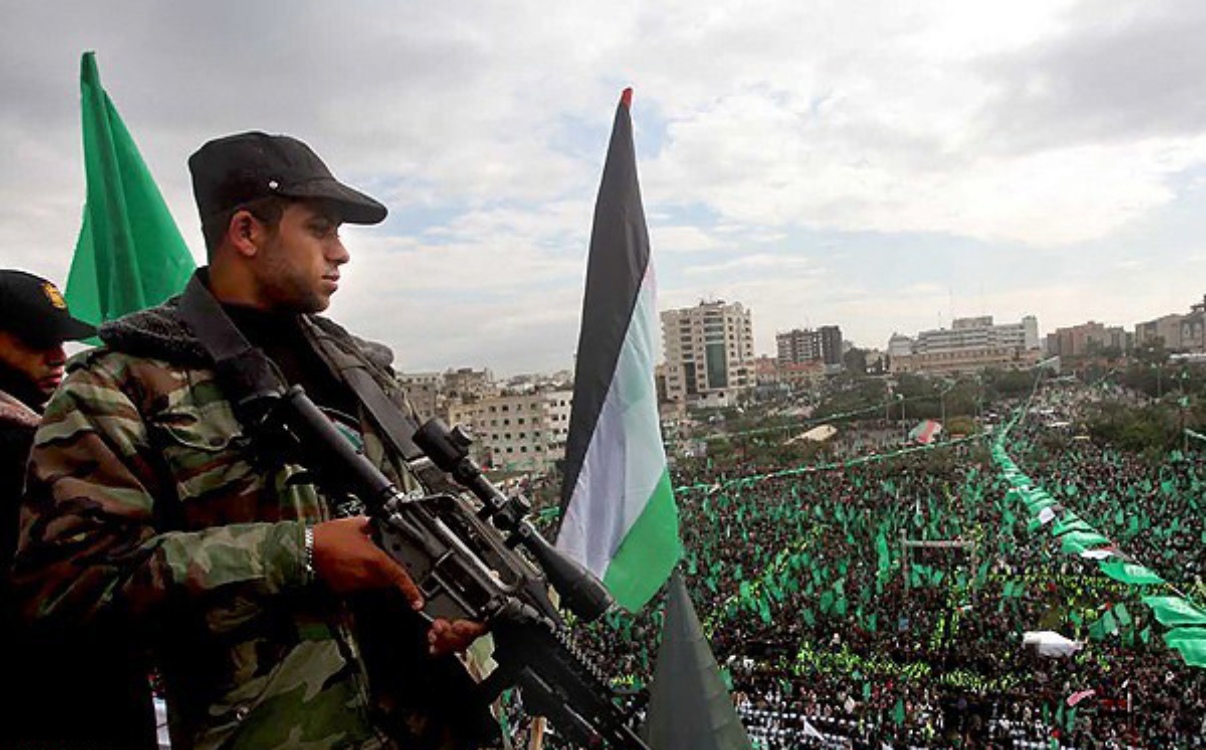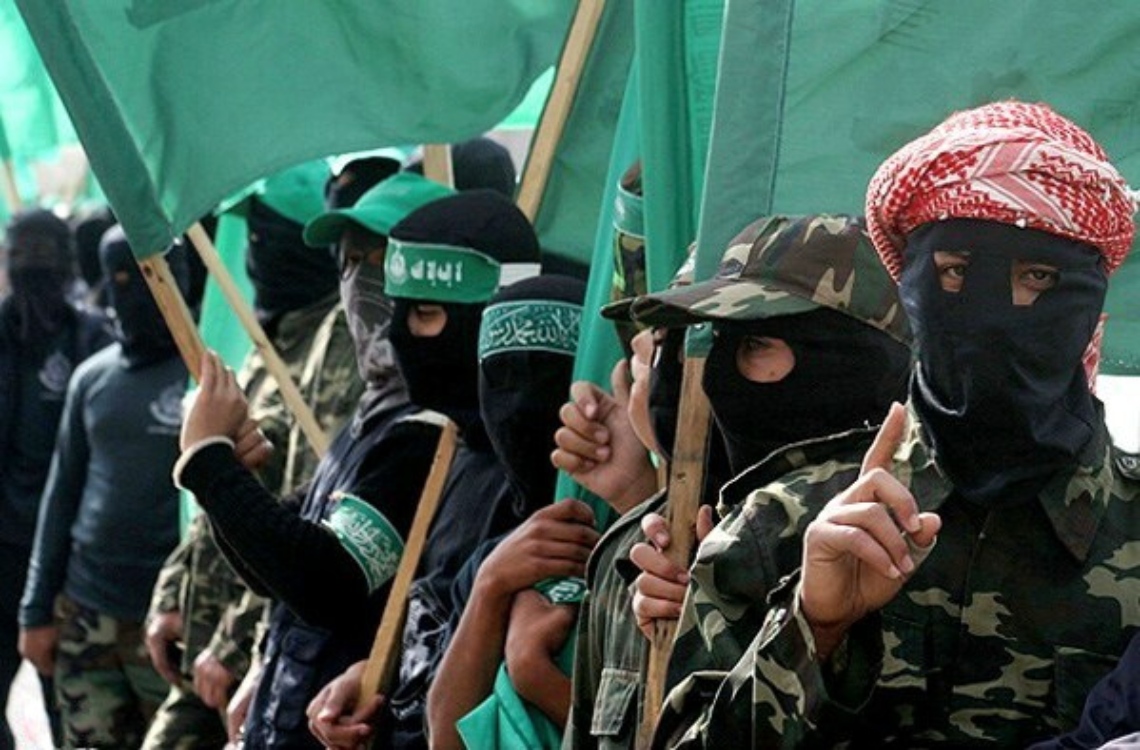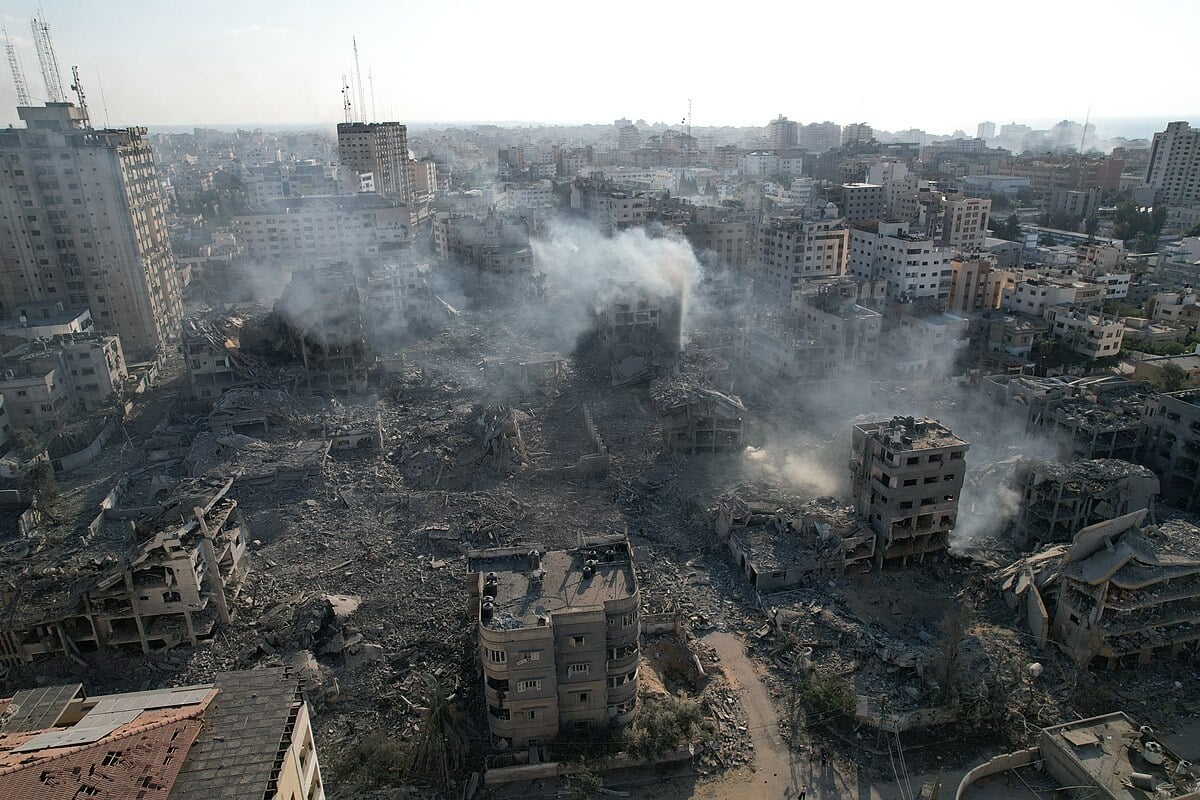
With the Israeli Defense Forces (IDF) now poised to launch a ground invasion of Gaza after Hamas militants struck Israel on October 7th, military capabilities of both sides will be tested in fierce urban warfare.
On paper, the battle is a mismatch. The IDF is a modern military force with access to a full spectrum of advanced capabilities. Hamas, despite being one of the most heavily armed militant groups in the world, cannot match Israel’s firepower.
However, the coming war will not be fought on paper. Hamas will avoid a conventional fight that favors the IDF and will instead try to drag Israeli forces into awkward irregular urban fighting more suited to a guerrilla force. How both sides use the ways and means available to them will determine the course of the war.
The IDF’s military capabilities
Israel is consistently ranked amongst the top twenty most powerful militaries by the defense aggregate GlobalFirepower.com (GFP), with a current ranking of 18 out of the 145 countries listed. This is hardly surprising given the country’s precarious geopolitical position and difficult history marred by conflicts with its neighbors.
Manpower
The IDF consists of approximately 173,000 active personnel with an additional reserve force of 465,000. Following the attack by Hamas, Israel has mobilized 360,000 of its reservists and a sizeable force has assembled near Israel’s border with Gaza ahead of the expected offensive.

Land power
The Israeli Ground Forces consist of the Infantry Corps, Armored Corps, and Artillery Corps. In terms of small arms, the infantry and elite paratrooper units are well-equipped with M4 and M16 assault rifle variants as well as the domestically produced Tavor bullpup rifles.
The backbone of the IDF’s armored component is the Merkava Main Battle Tank (MBT). The IDF has about 550 Merkava Mk IV tanks and 820 of the older Mk III variants. The Armored Corps also fields several variants of infantry fighting vehicles (IFV) and armored personnel carriers (APC) which may prove more suitable within the confines of irregular urban warfare in Gaza.
In terms of artillery capabilities, Israel’s military can bring significant quantities of firepower to bear against Hamas. The M109 “Doher” (Galloper) self-propelled howitzer is the primary armament of the Artillery Corps. The IDF also uses M270 MLRS multiple rocket launchers and smaller missile launchers, such as the Spike NLOS, which can be mounted on an APC.

Airpower
As a conventional fighting force, Israel enjoys an absolute military advantage in airpower over Hamas, which has no fixed-wing manned aircraft. The IDF operates a number of fighter jets, including the advanced F-35 stealth multirole combat aircraft, the IAI Kfir (based on the French Dassault Mirage 5), and F-15 and F-16 variants.
Israel’s ability to deliver firepower from the air and conduct intelligence, surveillance, and reconnaissance is bolstered further by its drone force. About 35.4 percent of the IDF’s drones have an attack capability, whereas 65.6 percent are used for reconnaissance.
The drone fleet includes the Orbiter 4, Heron-1, Hermes 450, Eitan, and Kochav unmanned aerial vehicle systems.
Overnight, IDF fighter jets struck:
❌ A Hamas military headquarters and neutralized a Hamas military operative.❌ A bank utilized to fund Hamas terrorist activity in Gaza. pic.twitter.com/fBC76MZa4P
— Israel Defense Forces (@IDF) October 17, 2023
Sea Power
The maritime domain is unlikely to feature as heavily as the land and air during operations in Gaza, but Israel may opt to use its military capabilities at sea to pound Hamas with more artillery strikes.
On Monday, Israeli Sa’ar 6 vessels reportedly fired at targets in the Gaza Strip, where Hamas produces weapons and assembles its naval commandos.
The Sa’ar 6 is equipped with an Oto Melara 76 mm main gun, two Typhoon Weapon Stations, sixteen vertical launch cells for Barak-8 surface-to-air missiles, forty cells for the C-Dome point defense system, sixteen anti-ship missiles Gabriel V, the EL/M-2248 MF-STAR AESA radar, and two 324 mm (12.8 in) torpedo launchers.
Crazy footage of an Israeli-Hamas naval battle which took place on Saturday as Hamas tried to infiltrate Israel from the sea.
Elite soldiers of the Israeli Navy destroy a Hamas boat & then engage Hamas terrorists who jumped into the water
Easy pickings for this Isreali soldier pic.twitter.com/eOsnLYsYmc
— Visegrád 24 (@visegrad24) October 14, 2023
Hamas’ military capabilities
Hamas is the Islamist political and military group that controls the Gaza Strip in the Palestinian territories. The military wing of the organization is the Izz ad-Din al-Qassam Brigades.
Hamas is designated as a terrorist organization by several states and supranational borders, including the US, the EU, and the UK. The group lacks many of the conventional means available to the IDF but has proven adept at irregular warfare and terrorism.
Manpower
Hamas numbers are difficult to judge since no official statistic exists, but previous estimates place the number of militants at about ten thousand.
However, this number could increase in the event that Israel pushes ahead with the ground offensive. “When violence flairs they can mobilize lots of people, so their numbers can go from 10,000 committed Hamas people to anything up to 40,000, 50,000,” commented Professor Michael Clarke.

Land power
Hamas’ attack on October 7th, which inflicted over 1,200 casualties and involved the insertion of militants via air, land, and sea, has demonstrated that Hamas is capable of conducting complex operations.
Most Hamas militants are armed with variants of the ubiquitous AK-47 assault rifle, which although basic, packs a punch with its 7.62x39mmm round and is extraordinarily reliable and easy to maintain. Militants also have access to various rocket-propelled grenades (RPGs), which can be used to take out armored vehicles.
Hamas lacks armored vehicles. These would be easy targets for the Israeli Air Force in any case. Instead, the militants rely on “technicals”—civilian vehicles converted for military use with the addition of a mounted machine gun or RPG. Although these lack protection, they are fast and rugged.
Regarding long-range firepower, Hamas employs multiple versions of Iranian-made Fateh-110 surface-to-surface ballistic missiles. Although Israel’s Iron Dome air defense system has proven capable of repelling rocket barrages, fired in a sufficiently vast quantity, it is possible for Hamas to overwhelm it.

Drones
In recent years, the proliferation of military-grade drones as well as the conversion of civilian models has enabled non-state actors with limited conventional military means to acquire unmanned aerial capabilities.
Hamas uses several types of drones. For example, there is the Al-Zawari (or Zouari), a compact, fixed-wing drone. It was originally designed for reconnaissance but has since been repurposed for offensive operations.
There is also the Shehab drone, developed by Hamas. It is equipped with a 30-kilogram explosive warhead and has a maximum operational range of 250 kilometers. It is thought to be configured with GPS coordinates and satellite imagery for target location, and it can be visually guided to its target by a ground operator using a camera.
Hamas has used drones against Israel on multiple occasions, most recently during the terrorist attack on October 7th, when the militant group attacked the Israeli security towers, border posts, and communication towers that line the border between Israel and Gaza.
The Hamas military wing's drone squad announced the use of 35 Az-Zouari-type loitering munitions in the war against Israel. pic.twitter.com/wG7jMuuQ08
— Sprinter (@Sprinter99800) October 14, 2023
The challenges of asymmetric urban warfare
Despite holding a clear advantage in terms of resources and capabilities, the IDF must prepare for the formidable challenge of urban warfare in Gaza should a ground offensive be launched.
Hamas recognizes its limitations in a conventional confrontation with Israel and is likely to avoid direct engagement. The densely populated urban terrain in Gaza presents ample opportunities for militants to stage ambushes against IDF troops. Moreover, Hamas’ intricate tunnel network can facilitate uninterrupted communication and maneuverability if Israel does not exercise caution.
Some military analysts expect that Israel will deploy two armored divisions and one lighter-armed airborne division, each consisting of five brigades. It is likely that one or two armored brigades, each equipped with tanks, would aim to divide the strip by advancing westward at its narrowest point, which is approximately six kilometers away from Deir al-Balah.
Meanwhile, two or three other brigade-sized units, consisting of several thousand personnel each, might concentrate their efforts in the northern regions, encompassing areas around Gaza City. Additionally, one or two other units could be assigned to operations in Khan Yunis or Rafah in the southern part of the strip.

The presence of hostages and civilians further complicates the situation for the IDF, which will be heavily scrutinized by the international community for any collateral damage it may lead to.
As explained by Dr. Jack Watling of RUSI, “The difficulties arise as to how such a mission is to be carried out, given that the area of operations comprises densely populated urban terrain with a large proportion of children and non-combatants and very weak critical infrastructure.”
Whatever the immediate result of the military confrontation between the IDF and Hamas and the wider geopolitical ramifications for the region may be, civilians caught in the middle are sure to lose the most.
See all the latest news from Greece and the world at Greekreporter.com. Contact our newsroom to report an update or send your story, photos and videos. Follow GR on Google News and subscribe here to our daily email!



